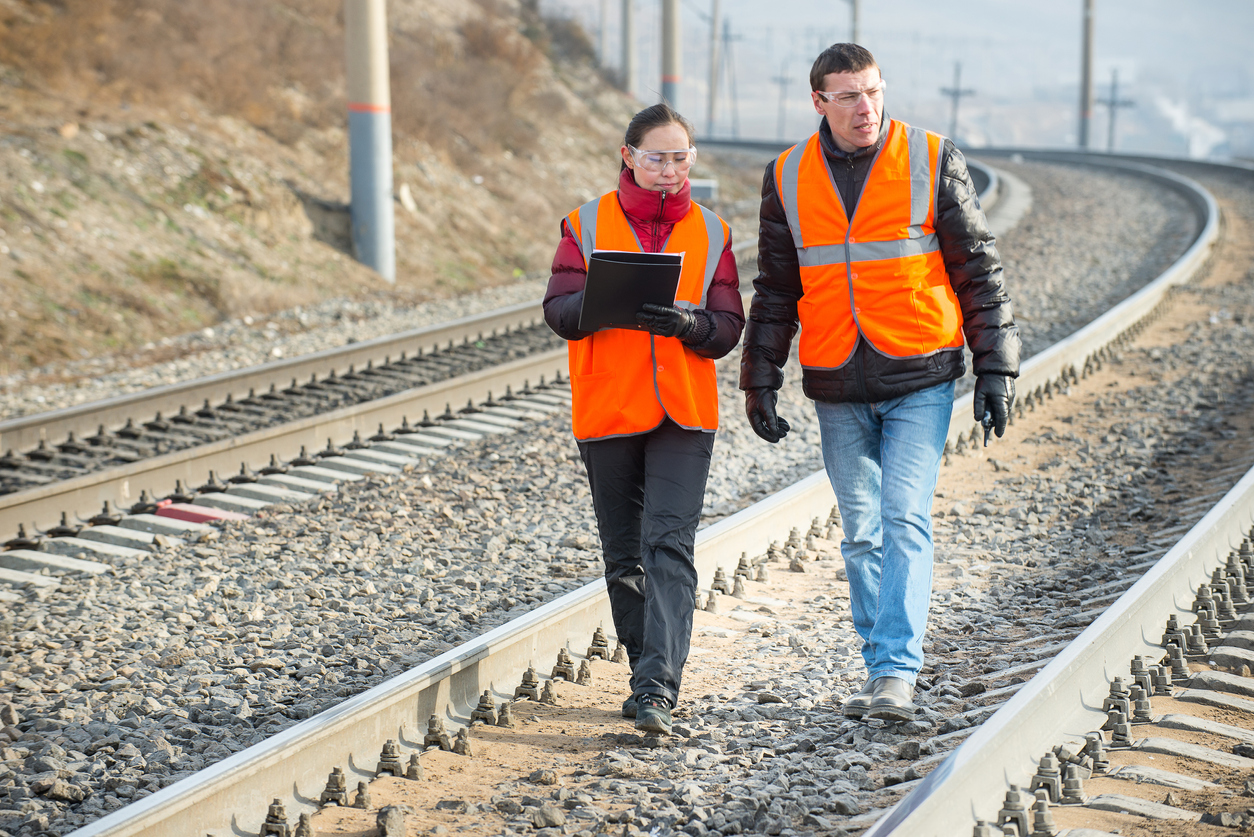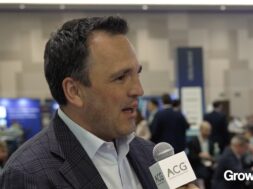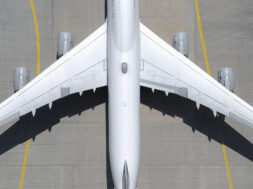How Railroad Maintenance Can Keep M&A Volume Rolling
Acquisition demand is high for this niche and fragmented market, says Auxo's Jeff Helminski

The U.S. economy largely runs on its more than 160,000 miles of railroad track, every inch of which needs maintenance and repair. The consequences range from freight movement disruptions to more tragic outcomes: as of October 2023, the Federal Railroad Administration recorded 742 derailments for the year.
It’s an issue that was brought into the national headlines this year following a string of high-profile derailments, including February’s derailment of a Norfolk Southern freight train in East Palestine, Ohio—an event that resulted in contaminated waterways around the area, forcing an evacuation order for residents.
Industry players and the U.S. government are taking initiatives to improve safety, with $1.4 billion in federal grants awarded to 70 rail bridges and track repair projects last September.
For middle-market dealmakers, a highly fragmented market bolstered by government funding makes for an attractive space for M&A. Yet few private investors are active in this market.
One of them is Auxo Investment Partners, a Michigan-based private investment firm that formed its railroad infrastructure maintenance platform, Genesis Rail Services, in 2021. Since, the firm has added Ferrovia Vegetation Management and Cariboo Central Railroad Contracting to expand the platform.
Auxo cofounder and managing partner Jeff Helminski spoke with Middle Market Growth to share why some investors can find it challenging to step into the market, and how Auxo overcomes those hurdles to drive growth.
Middle Market Growth: Let’s first talk about what inspired Auxo to invest in the railroad maintenance and repair industry, and to create the Genesis Rail Services platform.
Jeff Helminski: At a high level, we like the macro trends behind a lot of things that get lumped into the infrastructure category. If you think about the world of economic growth and transportation, rail is a very cost-effective way to transport goods, probably second only to marine transportation, where we’ve also go investments.
We like the macro trend around the commercial economics of the space. There is a lot of demand for investment opportunities in this space, but very few opportunities today. We’re quite good at working with small, fragmented industries where we can build something big enough for larger players in the industry to use as their own starting point. And this is a very fragmented market. There are a handful of large players in this rail infrastructure maintenance industry. There are very few medium-sized players, and there is a very, very large number of small, regional, often family- and proprietor-owned businesses doing tis type of work for various railroad customers. We like that dynamic of a broad set of potential acquisition opportunities, but in a space where there are not a lot of folks in the middle.
Our philosophy has always been that we are willing to roll up our sleeves and work with small businesses to build them into a larger, more professionalized, scalable operation. If we do that, we will have built something of great value that, in our model, we can continue to own for a very long period of time, or that would be an attractive asset to others.
MMG: One thing that is particularly interesting about this space is that a lot of repair and maintenance work is on infrastructure that can be quite old. Yet there are some technologies emerging that can start to bring innovation to the market. Are there any technologies you find promising, or is this sector more of a legacy field that isn’t experiencing too much technological disruption quite yet, from your perspective?
JH: I don’t see a tremendous amount of technological disruption in the space. If you think about the type of work that’s going on here, at least in the space we participate in, what we like is that it’s recurring. I’ll refer to our vegetation management business, as an example. The weeds grow every year, and you can spray them and keep them from growing in any given year, but they come back the next year. There isn’t a lot of technology that’s going to disrupt the weeds from growing, right? We sort of are that technology.
If you think about things like tie plate distribution [upon which sit the rails], if you think about needing to replace the rail because it does wear out over time, when you’re replacing long stretches of that, you have to get all of the equipment and replacement supplies out into the field. Think about doing that over miles and miles and miles of track—and oftentimes in very remote locations. Those tie plates that I was referencing, you need one of those every couple of feet, roughly, and they weigh about 20 pounds apiece. It’s actually quite a logistics challenge.
From a technology standpoint, it’s unsophisticated work. We’re dropping big chunks of steel onto tie plates every 24 inches or so, for miles. There’s not a lot of technological disruption to change the need for that.
But where there is opportunity to introduce technology, and this is where we’re participating in some of those technological changes. On the vegetation management side of things, we have proprietary technology for our spray trains—trains that run down the tracks and spray herbicides on the weeds, because they’re a safety concern for the railroads. We have an optical vision technology that can see where there are and aren’t weeds and only spray the right herbicides where there are weeds. The next evolution of that, which we’re working on, is an AI-enabled technology to recognize what types of weeds it’s seeing and what herbicides to spray on those weeds.
With the tie plate distribution site, as another example, the tie plates still need to get out there, but we’ve got a patented technology that allows us to do that with some equipment we designed that reduces the labor content to distribute each tie plate versus conventional methodologies.
The need for these services doesn’t go away, we’re just able to do it more cost effectively (with technology), and therefore service our customers better at the end of the day, and make a better margin than you could otherwise.
MMG: What are some of the headwinds the industry is facing right now that investors should look out for in the due diligence process?
JH: The two things I see most prevalent from an operational perspective is, this is an industrial service, and typically a pretty labor-intensive industry. It’s also an industry where the labor is needed not just in one geography. If you think about where railroad tracks go, that’s where you need people to get to do the work. It tends to be physically demanding in many cases, and is also a profession that requires people to be away from home. You’re working over large expanses of geography, so finding labor that wants to do this work and travel to the places they need to be to actually do the work is probably one of the biggest challenges we face.
MMG: Are there any other considerations unique to the railroad maintenance and repair industry?
JH: There is a safety angle in this space, and we think there will continue to be more focus on safety, not just in the rail space but in a lot of industries. Derailments happen all the time across the country. A couple of very high profile, tragic derailments have been in the news and gotten people’s attention. I think there’s going to be more and more attention on safety places on the rail industry to make improvements and put sensors on rail car wheels, for example.
MMG: What is your outlook for the railroad maintenance and repair sector in 2024, and what does that mean for M&A activity in the market?
There is a lot of interest in the space…But it’s a pretty fragmented, small-scale market today, and there are only a couple of players that have any scale. We’re one of them.
JH: I’ll take the second point first and just say that there is a lot of interest in the space. We get phone calls on a regular basis from people interested in Genesis Rail Services. But it’s a pretty fragmented, small-scale market today, and there are only a couple of players that have any scale. We’re one of them.
In terms of M&A activity, it’s interesting. There is a lot of demand for acquisitions in the space, but there’s not a lot of supply of investable businesses at the scale that many of the players that have the capital to play in the space are willing to start with. You’ve got an interesting imbalance between a lot of demand and not much supply that meets the parameters that the demand is looking for.
In terms of general outlook, the rail industry has got some stability to it because of the nature of what it does. The weeds grow every year and you’ve got to spray regardless of the amount of volume that’s moving on the rails, for example. When you get past that fixed level of work that needs to be done, it’s really dependent on the economy and the amount of freight moving. That’s what drives wear and tear, that’s what drives replacement needs. For the more stable, fixed component of work that needs to be done in this industry, it really is driven by the macro economy.
This interview has been edited and condensed for clarity.
Carolyn Vallejo is Middle Market Growth’s digital editor.
Middle Market Growth is produced by the Association for Corporate Growth. To learn more about the organization and how to become a member, visit www.acg.org.


